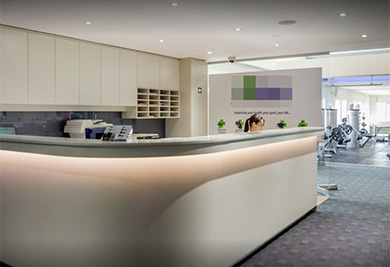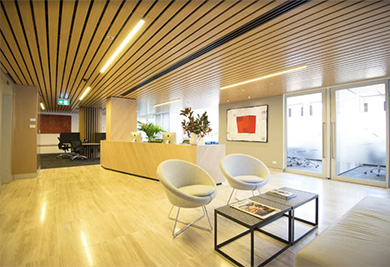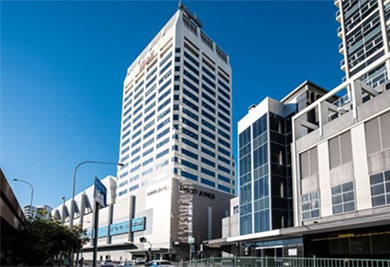Painful joints when exercising? Maybe it’s your shoes…
Most of us have experienced how our footwear choices affect our daily lives. For women its likely high heels, which will probably have you kicking your shoes off at the end of the day and asking your partner to massage some kind of scented foot cream into the balls of your feet. For those men who get around in the standard Oxford or stylish Brogues for work, your most likely to experience painful corns and callus’ on the little toes (and not do anything about it!).
Now when we exercise though, we tend to be a bit more sensible with our footwear. Nothing tight (unless its got cleats on the bottom). Not leather (or other occlusive material) and is breathable. And most importantly; you find them comfortable.
So you probably think your footwear fit these specifications, and are now wondering “How do my (good) shoes impact my knee/hip/back?”. WELL.
Truth is, maybe your shoes aren’t that good? And unfortunately, comfortable shoes (although integral) doesn’t translate to ideal exercise shoes. But that’s ok, because now we can discuss what you need to look for when buying shoes from now on.

The Outsole
The outsole is the part of the shoe that touches the ground. There isn’t too much here for you to worry about when buying new shoes, all should offer adequate grip in the wet and across most surfaces. Where the outsole matters to you is in the pair you currently have; is one section worn down more than the rest? This may be an indicator that you need a new pair, as this if one of the first and easily recognisable ways to determine shoe overall integrity. You can expect anywhere between 400km to 800kms out of your running shoes, so if your in this range check for signs of wear examples of wear include:
- Areas of splitting or high wear on the outsole
- Creases in the midsole foam

The Midsole
Here is where the magic happens. Each brand has its own trademarked version of cushioning or control materials. What is important to you is that you get a shoe that offers sufficient amounts of each, in the right areas. For example, if you are a heavy pronator (foot flattening/low arch) then you are putting excessive amounts of load through the medial (inside) knee and lateral (outside) hip, increasing your risk of osteoarthritis and soft tissue inflammation at both sites (think runners knee and greater trochantic bursitis). On the other side of the spectrum a supinator (high arch) are more likely to experience stress fractures of the long bones of the feet, and straining of the peroneal muscles. With both foot types, it is important that the shoe bends at the same point as your big toe joint; if the shoe folds in half relatively easily, its probably not going to offer the support you need. As a general rule, a pronator needs support on the medial side of the running shoe, and a supinator (high arch) needs cushioning.
You can expect anywhere between 400km to 800kms out of your running shoes, so if your in this range check for signs of wear

Heel counter
The heel counter (cup) is the back of the shoe, where your heel sits. This is an important component of all shoes, but even more important when your undertaking activities that increase the forces going through the body.
If it folds flat when you press on it then yours is no good. The heel counter needs to be firm as it both prevents the heel from slipping out of the shoe, and prevents excessive eversion (heel pointing out to the side) and translating the supportive properties of the midsole into the foot.
You will usually find them as an external component (visible plastic) but sometimes are sewn into the upper of the shoe. Important to note that this area should not be uncomfortable when walking/running, and a heel counter that is too narrow can irritate the attachment site of the achilles tendon, and result in blistering.
Upper and Fastening System
The upper is where each company chooses to express itself aesthetically (logos), and is where you will find the fastening mechanisms (laces). You will want to ensure that your exercise footwear is breathable (so as to prevent excessive sweating and harbouring fungal infections) and flexible (to accomodate for swelling and bony/joint deformities like bunions). Other than this you have free reign in this department.
Emerging technology in running shoes promote a “glove-like fit” with their stretch material uppers; they feel great and so far the fit is superb. Unfortunately the ‘glove-like’ fit hasn’t been extensively field tested and possibly wont extend to the life of the running shoe, so being early days and for simplicity; stick to laces. In regards to why a good fastening system is needed, the argument is quite a simple; a great, supportive midsole and firm heel counter are useless if the foot isn’t tied into the shoe. Laces get bonus points due to the flexibility they offer in the way of accomodating painful areas and wider feet by altering the lacing format.
So do yourself a favour and inspect your shoes; check the sole and see if its wearing and check your heel counter to see if it folds flat. If you notice either of these, or that your shoe is flimsy, then your due for a new pair!
Bear in mind that good footwear will only give you a great base to exercise, and if there are any biomechanical (human movement) issues or muscular weaknesses/restrictions associated with any pain you experience then assessment from a qualified health professional is encouraged. For a list of the 5 most common running injuries, please click HERE.
If you have any questions, please feel free to come down to Podiatry First (book online HERE) and we can discuss your particular issue, and work with you to get you back to exercise pain free!
Thanks for reading!
Leave a reply



Leave a reply